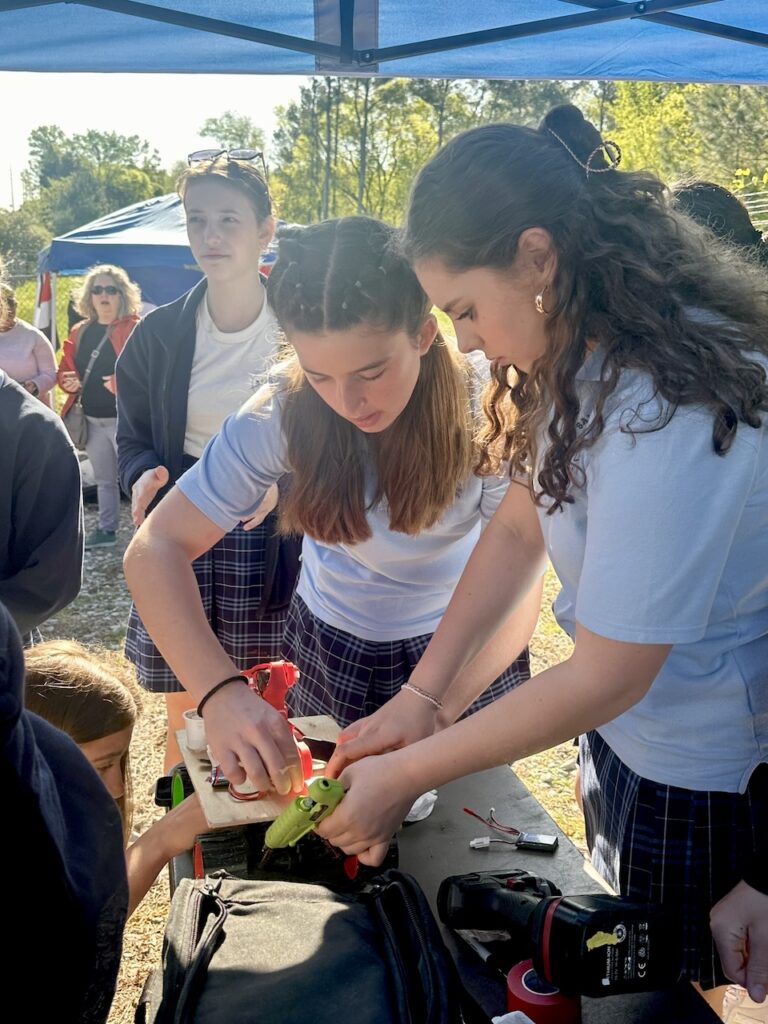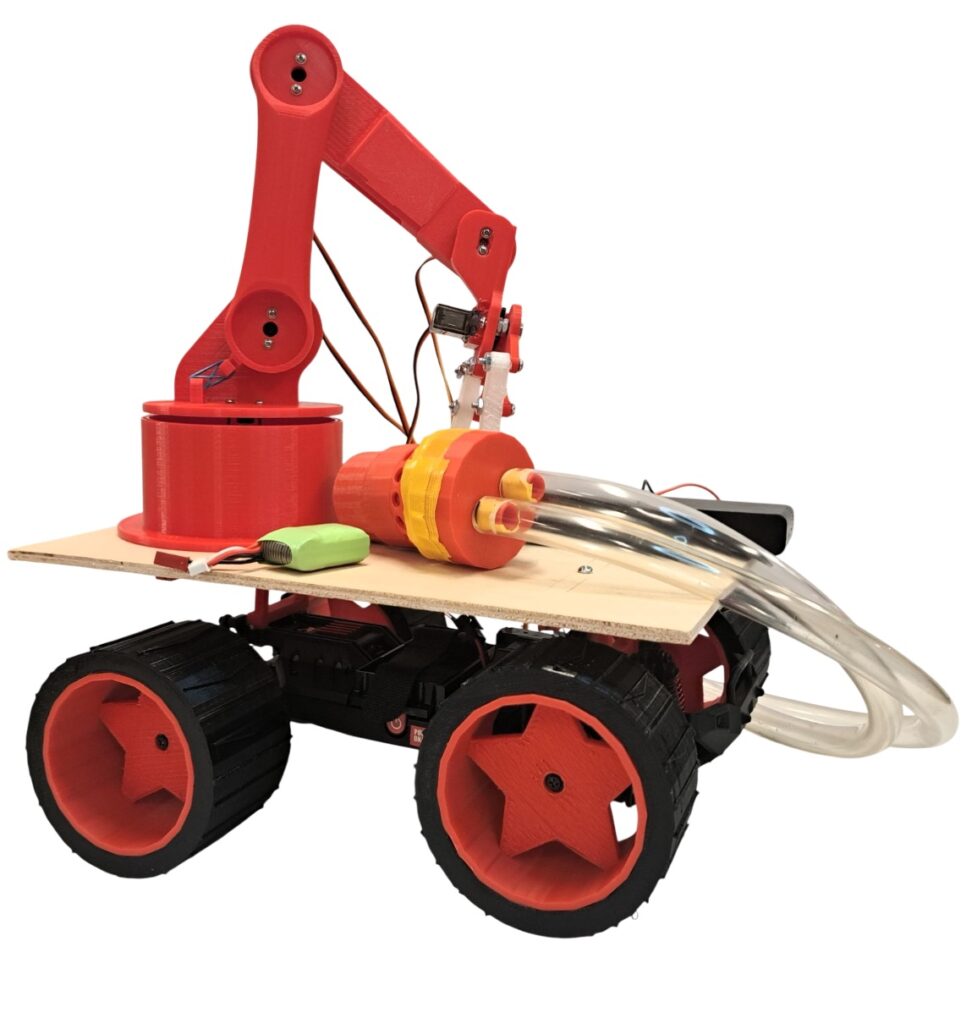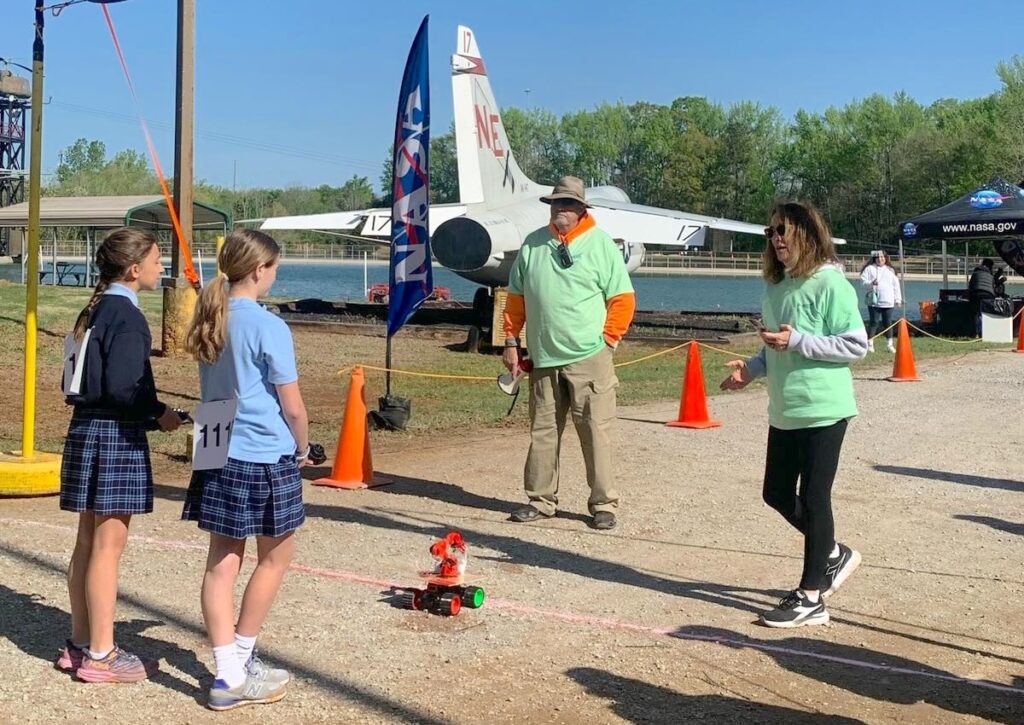The students of St. Mary’s School, Richmond, made one giant leap for student-kind as they became the first middle school team to compete in NASA’s Human Exploration Rover Challenge (HERC).
This competition brought 75 teams from around the globe to NASA’s Marshall Space Flight Center in Huntsville, Alabama, for a weekend-long tournament. Their mission: design and build a rover capable of completing tasks similar to those used in the Apollo and Artemis missions to the moon.
HERC has been open to high schools, colleges, and universities since it was first established in 1994, but this was the first year middle schools were able to vie for a coveted spot in the competition. The final event was held April 11-12, but teams started their work back in October.
“This was an extremely challenging undertaking,” said Peter Tlusty, St. Mary’s technology teacher. “I promised them it would be the hardest thing they ever tried; they would be asked to do work they have never seen before.”
Thinking like engineers
Once they had the concept for their rover, the 22 middle schoolers needed to create a ten-page written proposal that included the design for the rover and their plan to have it ready in time for the final event. The team was ecstatic when NASA approved their application out of hundreds of others, but that was just the first hurdle.

The team soon had to create a 20-page Design Review which explained how their rover worked and how it would be controlled remotely. The report had to include blueprints, schematics, fault lists and remedies, safety lists, a budget, and a timeline.
The team also had to design two devices to attach to the rover and include detailed information in the report. They chose to build a robotic arm and a vacuum. The students were required to give a 30-minute formal presentation of their Design Review to NASA representatives, followed by a 15-minute question and answer session, a tall task for the young students.
“This was a ton of work, a ton!” exclaimed Tlusty. “We are asking them to compete against high school and college students and do the work expected at that level.”
The next step was to build and refine the rover over the proceeding months. The final HERC course in Huntsville was a half-mile long, riddled with ten different obstacles. Tlusty explained that each obstacle was representative of the terrain found on the moon or Mars. Obstacles included sand, rocks, craters, and ravines – simulating asteroid debris, erosion ruts, and steam beds. The rover had to maneuver the course and successfully complete tasks by collecting specimens with the robotic arm and vacuum. The middle schoolers had to think like NASA engineers.
Bumps in the road
The road to Huntsville, much like the HERC obstacle course, was bumpy. The team’s first prototype failed to perform well, so they scrapped it and started over. This was a big blow in the beginning, but one they didn’t have time to dwell on.
“I think the kids realized they needed each other early on,” said Tlusty.
The team ditched its previous PVC pipe-based frame and turned to a chassis from a remote-controlled monster truck for a foundational structure. From there, the team designed specialized tires that were large and strong enough to climb over rough terrain. They used a 3D printer to produce the tires, robotic arm, and other components.
For the filament used in the 3D printer, they chose the color red in honor of Lightning McQueen, Disney/Pixar’s famous race car known for excelling on any course. But Christ was always at the center of their journey. They even listed him as a team member in their Design Review. His team role? Inspiration.
“I always try to make sure that no matter what project I am working on, Jesus is the center of everything,” said team lead Reagan Core. “I believe God has been watching over us throughout this whole journey, and he has helped us achieve so much already.”
Principal Amanda Esparza, a strong supporter of the team, commented on the importance of STEM in a faith-based school. “It allows our students to explore the world through scientific curiosity while making responsible choices aligned with our faith values and principles,” she said.
Another requirement of the challenge was to give a presentation to a community group of at least 250 people. St. Mary’s students travelled to an elementary school in Prince George County to teach younger kids about HERC and their rover.
“The kids were so excited and asked if we could come back. Hearing things like that from elementary kids just makes me feel extra supported,” said eighth grader Bella DeWell.
Over the past six months, the team made many adjustments to their rover. They spent hours building and practicing obstacles around school grounds. They were asked to produce another 20-page report once the rover was complete, this one called an Operational Readiness Review. It required more detail and included another presentation and Q&A session.

Middle school ‘rock stars’
They learned they were chosen as one of only 75 teams – and the only middle school – to compete in the finals.
St. Mary’s held multiple fundraisers over the school year, appealing to both school families and parishioners to help them get to the competition.
“We are so lucky to be able to participate in this NASA challenge,” said seventh grader Ana Villagrana. “Our school community has been so supportive.”
Before leaving for Huntsville, Tlusty shared his hope for the team: “I hope the kids really cherish their time at the competition and visiting the U.S. Space and Rocket Center. It was such a privilege being selected and I hope they just enjoy the days competing and visiting the other teams and seeing all the other rovers.”
Tlusty said the team was treated like “rock stars” at the competition. Everyone wanted to meet the middle schoolers who actually made it. The team performed well, placing seventh in their division.
They ran into some trouble on day 1, as their robotic arm broke and they were unable to complete the specimen collection task. However, the team rallied. They worked together to fix the arm and on day 2, sailed through the obstacle course without a hitch.
“From this experience, I have truly learned the value of teamwork,” DeWell said. “I always knew teamwork was important, but through this competition, I have learned how important it is to communicate and work as one to reach a goal.”
Core agreed. “We have so many intelligent minds working together to create an amazing project. The collaboration that my team shows and puts in is so inspiring. I love seeing how everyone works as one whole team to put every piece of the puzzle together.”
They could have given up after their first prototype failed. They could have quit when they realized the magnitude of the challenge. They could have walked away on day 1 when the robotic arm broke. But they didn’t. They persevered and completed their mission.
“Our faith has shown itself during our hardest moments,” said Villagrana.

